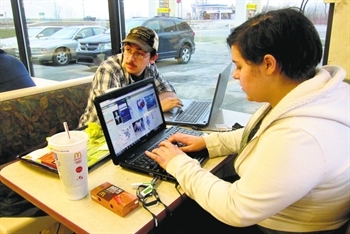Building Private-Public Partnerships is Key to Success for Broadband Expansion in Illinois
Drew Clark
Published: February 20, 2013

 We’ve seen multiple news articles in the first months of 2013 that present challenges and opportunities in our core broadband space. At Broadband Illinois, we’re tuned in to happenings in the high-speed realm both for our own state and for the lessons learned elsewhere.
We’ve seen multiple news articles in the first months of 2013 that present challenges and opportunities in our core broadband space. At Broadband Illinois, we’re tuned in to happenings in the high-speed realm both for our own state and for the lessons learned elsewhere.
As the designated state broadband initiative, our organization – officially known as the Partnership for a Connected Illinois – works with a number of projects funded through the Broadband Technology Opportunity Program. Equally as important, we support the work of private providers of broadband throughout the state. Our mission is clear – we want every citizen, business, doctor and public safety officer to have access to super-high speed internet and the tools and skills necessary to use broadband at its highest capacity. Broadband is a nonpartisan issue and it benefits the long-term future of our state and country. A New York Times article on February 12 criticizes the granting of BTOP funds to a Colorado project, suspended last December, called Eagle Net. The article suggests that this education consortium, granted funds to conduct a fiber build to rural Colorado, was excessive and that it built out fiber to areas already served. It included complaints from private providers of broadband services, but also supportive comments from Eagle Net customers.
An opinion piece in the Chicago Tribune on February 12 presented an argument against Governor Quinn’s Illinois Gigabit Communities Challenge. The article sets up an opposition between what it calls “government-operated networks” and private sector-networks. From our perspective here at Broadband Illinois, we will continue to be scrupulous about not showing favoritism to government-funded networks versus privately-funded networks, and we work collaboratively with all providers.
On our website, we have a page for each of the broadband stimulus projects.
In our role as the recipients of a $15.7 million pass-through grant from the Department of Commerce and Economic Opportunity (DCEO), we administer Illinois State funds granted to four private sector projects – Clearwave, Convergence Technologies, Connected Living and Shawnee. Three of those four have completed their projects; we are continuing to monitor the fourth, Convergence. For each of these grants, we closely monitor NTIA and U.S. Department of Agriculture filings and reports to verify compliance with program objectives. As part of the template for evaluating the progress of all projects, both private-sector and public-sector, we have been collecting and posting monthly reports on all broadband stimulus projects since early 2011. Visit www.broadbandillinois.org/projects to see this collection of reports and status updates.
As mentioned, we work collectively with all providers and are in the process of collecting the 7th round of data on broadband speeds and availability to be submitted to the National Broadband Map. In addition, we’re moving forward with important broadband adoption and usage efforts for rural and low-income Illinoisans. The “Better Broadband, Better Lifeline” is a great example of the private-public partnerships we aim to forge. The pilot project (funded through a $1.5 million FCC award) partners the efforts of 7 private Eligible Telecommunications Carriers, Connected Living and the Citizens Utility Board. In addition, Governor Quinn’s Gigabit Challenge has thus-far made three awards to both private (Gigabit Squared) and public (City of Aurora) providers who will expand high-speed infrastructure to thousands of users.
 Additionally, many also saw a January 29 article in The Wall Street Journal, which featured a low-income Alabama community, “The Web-Deprived Study at McDonalds.” This piece outlined a number of key points:
Additionally, many also saw a January 29 article in The Wall Street Journal, which featured a low-income Alabama community, “The Web-Deprived Study at McDonalds.” This piece outlined a number of key points:
- Home access to broadband (and not just school and library access) is vital.
- The FCC is in the midst of changes in its Universal Service Fund.
- It can be expensive to subsidize broadband for the long term.
- Free access points (like libraries, schools, McDonalds, Starbucks) play a key role in access.
- Mapping an area’s free Wi-Fi hot spots helps encourage more of them.
- Schools are increasingly assigning homework enhancing “digital skills.”
- There are many nationwide initiatives to tackle the challenge of 100 percent connectivity
- Communities can finish building their own information highways
This Alabama effort combines mapping broadband assets, working collaboratively to facilitate new infrastructure investments, and using foundation-supported funding to enable digital literacy training and education.
Sound familiar? This is exactly the effort in which we are here engaged in Illinois.
Bottom Line: Through building on the competencies that Broadband Illinois has demonstrated, we will work together to build a connected future for all.
Drew Clark is the executive director of Broadband Illinois. You can find him on Google+ and Twitter. He brings experts and practitioners together to advance Better Broadband, Better Lives.
For more information on our Springfield-based organization, visit www.broadbandillinois.org and make sure to download our 2012 Annual Report.